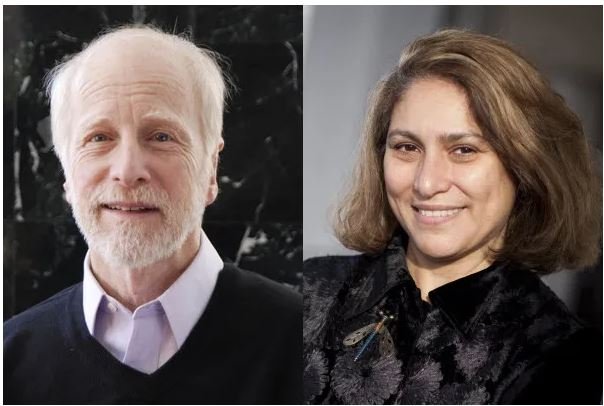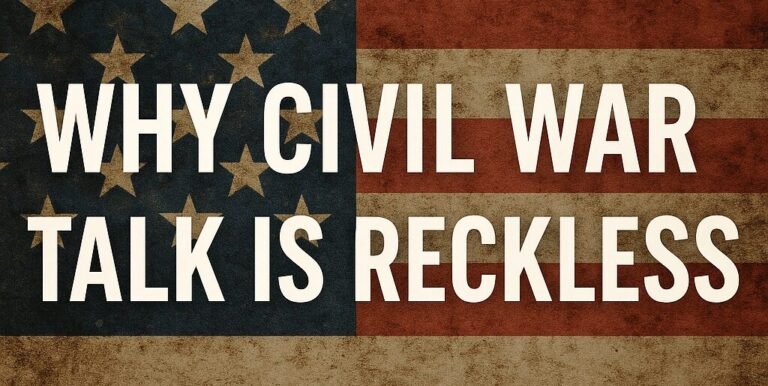Who Is and Who Is Not Worthy: Exploring Leadership Archetypes through the Concept of Implicit Social Cognition
Have you ever found yourself in a situation where someone’s advice didn’t quite resonate with you? Perhaps it was a mentor, a colleague, or even a supervisor. I recall past encounters that left me pondering the complexities of leadership and the underlying factors that shape our perceptions of worthy leaders. This experience, coupled with the concept of Implicit Social Cognition, prompted me to delve deeper into the subject and explore its impact on our professional lives. In the end, this type of personal interrogation/introspection reflection is personally beneficial and cathartic.
Implicit Social Cognition
Implicit Social Cognition delves into the unconscious biases and cognitive processes that silently shape our thoughts, judgments, and behaviors. It involves automatic cognitive processes that occur without conscious awareness or control. These implicit processes can influence our behavior and decision-making, even if they differ from our consciously held beliefs or intentions. It encompasses the hidden mechanisms that influence how we perceive and evaluate individuals within social contexts, including the realm of leadership. These cognitive biases, deeply ingrained through societal conditioning, personal experiences, and cultural influences, play a crucial role in determining our beliefs about who is and who is not worthy of leadership positions.
Implicit research, particularly in the realm of implicit social cognition, has found practical application in various professional contexts, including law enforcement training. Its utilization has been aimed at several objectives within the field. In the context of law enforcement, implicit research has been utilized to raise awareness about unconscious biases among professionals in the field. Training programs have been developed to incorporate education on implicit bias, enabling officers to recognize and understand their own implicit biases. By doing so, these programs strive to promote more equitable and unbiased decision-making within the law enforcement community.
Are you ready to challenge your preconceived notions and explore the impact of our unconscious biases?

Understanding Implicit Social Cognition
Unveiling the impact of implicit social cognition on our perception of viable leaders, mentors, and workplace transparency
In the context of leadership, implicit social cognition holds immense power. It guides us in determining who we deem as worthy leaders, mentors, and individuals with whom we feel comfortable being transparent and vulnerable with, particularly within our work environments. But how does this work exactly? How does our subconscious shape our perception of leaders, and what implications does it have for diversity, equity, and inclusion? How does it work, and what are the cognitive biases that influence our perception of leadership archetypes? To explore these questions, I will examine the intricate relationship between leadership archetypes and implicit social cognition. By understanding the cognitive biases at play, we can shed light on how they shape our perspectives and influence our professional interactions.
Understanding Implicit Social Cognition
The concept of implicit social cognition was coined in the 1990s as part of research on implicit bias and stereotypes (Greenwald & Banaji, 1995). It emerged from the realization that people’s explicit attitudes and beliefs often do not align with their implicit biases. In other words, even if someone consciously thinks they hold certain views, their unconscious mind may still harbor biases or stereotypes that they may not even be aware of. The term was popularized by researchers Anthony Greenwald and Mahzarin Banaji in their influential article published in the Journal of Personality and Social Psychology in 1995.

Definition and Key Concepts
The original intent of research on implicit social cognition was to investigate the presence and impact of unconscious biases and stereotypes on social behavior. Researchers aimed to understand how these implicit biases could contribute to discrimination, prejudice, and other social phenomena.
Generally, Implicit Social Cognition, sometimes referred to as unconscious bias, is defined as the mental processes and associations that occur automatically and unconsciously, influencing our attitudes, beliefs, and behaviors towards others. It involves the activation of implicit biases, stereotypes, and prejudices that shape our perceptions and judgments of individuals or social groups, often without our conscious awareness or intentional control. Implicit social cognition can affect various aspects of social interactions, including decision-making, behavior, and interpersonal dynamics. It is studied to gain insights into the hidden biases and automatic processes that influence social judgments and to develop strategies for reducing the impact of implicit biases on individuals and society (Greenwald & Banji, 1995; Kurdi & Banaji, 2022).
Linking Social Cognition to Leadership Archetypes
Implicit social cognition plays a significant role in shaping our perception of leadership archetypes and has a profound impact on our expectations and preferences for leaders. This influence becomes especially evident when examining the demographic representation within professions such as higher education leadership. Research consistently highlights a gender disparity in leadership positions within academia, despite women’s substantial presence in the workforce (Azizi et al., 2022; Tarbutton, 2019). Implicit biases rooted in gender stereotypes and Society’s expectations contribute to the perpetuation of traditional gender roles in higher education leadership, creating barriers for women seeking higher leadership positions.
In addition to gender representation, implicit social cognition also affects other dimensions of diversity within leadership roles. Biases related to race and ethnicity, for example, can influence how we perceive leadership archetypes, resulting in the underrepresentation of individuals from minoritized groups in higher education leadership (Rosser, 2004). The career landscape is diverse, and not all sectors exhibit the same patterns of gender representation. One such sector that displays a gender imbalance in the opposite direction is the student affairs profession, where more than 70% of professionals identify as women (O’Donnell, 2018). This significant gender disparity within student affairs has resulted in a gendered experience for men in the field. The overrepresentation of women in this profession can impact the perception and value assigned to male entry-level and mid-level student affairs professionals.
The gender composition within the student affairs profession plays a crucial role in shaping expectations, stereotypes, and biases that influence the opportunities and career trajectories of men working in this field. The prevalence of women in student affairs may lead to assumptions that positions within the profession are better suited for women, potentially limiting the advancement and growth of male professionals. These biases and stereotypes can impact hiring decisions, promotions, and overall career progression.

However, it is important to note that gender parity starts to become more evident at the executive levels of student affairs leadership, such as Associate Vice Presidents (AVPs) and Vice Presidents (VPs). At these higher levels, the gender disparity shifts in favor of men, particularly white men. The underrepresentation of women, especially women of color, becomes more pronounced at the presidential levels of institutions (MacAlpine, 2022).
Understanding and addressing these gender dynamics is essential for promoting inclusivity and equal opportunities for all professionals in higher education leadership, irrespective of their gender (Madden, 2011). These biases, operating unconsciously, impact evaluations, assessments, and promotion decisions, thus perpetuating existing disparities in leadership representation. By challenging existing stereotypes, biases, and gendered expectations, we can work towards creating a more equitable and diverse landscape within student affairs and higher education leadership as a whole.
To foster greater diversity and inclusion in higher education institutions, it is crucial to recognize the influence of implicit social cognition on leadership archetypes (Carnes & Ellison, 2015). By acknowledging and actively challenging our biases, we can work towards dismantling systemic barriers and creating equitable opportunities for individuals from underrepresented groups to assume leadership roles. Through an examination of the impact of unconscious biases, we will gain a deeper understanding of the complex dynamics surrounding diverse representation in leadership positions within academia and beyond.
The Power of Perception in Leadership
Impact on Diverse Representation in Leadership Positions
Implicit social cognition has significant implications for diverse representation in leadership positions as it perpetuates the underrepresentation of marginalized groups, including women, people of color, and individuals from other underrepresented backgrounds. These biases ingrained in our social cognition contribute to existing power imbalances and limit opportunities for those who do not conform to traditional leadership archetypes. Recognizing the influence of implicit social cognition is crucial for dismantling systemic barriers and fostering a more inclusive and equitable leadership landscape.
High-profile instances have underscored the detrimental effects of a lack of diversity in leadership. The Pepsi ad featuring Kendall Jenner, commonly referred to as the “Pepsi Brittany,” is a notable example of a company’s misstep regarding sensitivity to diversity. The ad, released in 2017, sparked widespread criticism for trivializing social justice movements and appropriating the Black Lives Matter movement. It portrayed Kendall Jenner resolving tensions between protesters and police officers by offering a can of Pepsi, which many found to be insensitive and an oversimplification of serious social issues. If I may code switch for a hot second…Like seriously, who approved of this dumb#$%?? smh

Another high-profile incident occurred in 2018 when H&M, a well-known clothing retailer, released an advertisement featuring a young black child wearing a hoodie with the slogan “Coolest Monkey in the Jungle.” The ad received significant backlash for its racially insensitive imagery, as the term “monkey” has historically been used as a derogatory racial slur against black people. H&M faced accusations of insensitivity and cultural ignorance, resulting in widespread condemnation and calls for boycotts. You simply can’t make this stuff up.

In 2019, Gucci faced backlash for releasing a sweater that resembled blackface imagery. The item, a black turtleneck sweater with a cutout for the mouth outlined in red, drew strong criticism for its resemblance to racially offensive caricatures. Many accused Gucci of cultural insensitivity and perpetuating racist stereotypes, leading to calls for a boycott and prompting the brand to issue an apology. Someone should have been fired – probably multiple people.
These incidents serve as prominent illustrations of companies’ significant missteps in recent years, leading to accusations of insensitivity towards diversity. They underscore the crucial importance of comprehending and addressing the cultural and social implications inherent in marketing and advertising, while also emphasizing the necessity for companies to adopt a more inclusive and sensitive approach towards diverse communities. It has been suggested that such costly and detrimental instances could have been avoided if there had been diverse representation in middle management and leadership positions. Therefore, the intersection of implicit social cognition and leadership archetypes can prove to be a costly and brand-damaging combination. After all, it seems implicit social cognition and clueless leadership archetypes make for quite the expensive comedy show – at which no one is laughing.

How can organizations proactively address implicit social cognition and promote diverse representation in leadership to mitigate blind spots, enhance decision-making, and foster a more inclusive and innovative culture?
Strategies for Mitigating Implicit Social Cognition
Recognizing and Challenging Cognitive Biases
One of the key strategies for mitigating implicit social cognition is to recognize and challenge our cognitive biases. By becoming aware of our unconscious biases and understanding how they shape our perceptions, we can take intentional steps to counteract them. This involves questioning our assumptions, examining our decision-making processes, and actively seeking diverse perspectives. By actively challenging our biases, we can broaden our understanding and make more informed and unbiased judgments.
Promoting Inclusive Leadership Practices
Promoting inclusive leadership practices is essential for combating implicit social cognition. Inclusive leadership involves creating an environment where diverse voices are valued, heard, and actively included in decision-making processes. Leaders should encourage and foster diverse perspectives, establish inclusive policies and practices, and cultivate a culture that celebrates diversity. This can be achieved through initiatives such as mentorship programs, diversity training, and creating opportunities for underrepresented individuals to take on leadership roles. By promoting inclusive leadership practices, organizations can dismantle the barriers that hinder diverse representation and foster a more inclusive and equitable workplace.
Fostering Open Communication and Trust
Open communication and trust are vital components in mitigating the influence of implicit social cognition. Creating a safe and inclusive space where individuals feel comfortable expressing their thoughts and experiences is essential. Organizations should encourage open dialogue, actively listen to diverse voices, and ensure that everyone has equal opportunities to contribute and be heard. Building trust among team members and fostering an environment of psychological safety enables individuals to challenge biases, share different perspectives, and collectively work towards creating a more inclusive and unbiased workplace.
Final Thoughts
In closing, our beliefs and biases are often formed unconsciously, influenced by our experiences and societal conditioning. Implicit social cognition offers a valuable lens through which we can explore the complexity of our thoughts and actions, challenging the binary notions of good and bad. It highlights the intricate nature of our cognitive processes and reveals how implicit biases can shape our perceptions of leadership and mentorship.
It is crucial to recognize that these beliefs are not set in stone. They can evolve and be reshaped as we navigate life’s journey, heal from past experiences, and continue to grow. Each individual has the autonomy to determine their own criteria for valuing leaders and selecting mentors. However, it is worth acknowledging that, like many organizations and individuals who have not critically examined their leadership archetypes, we too may miss out on meaningful relationships and valuable guidance if we fail to interrogate our own biases.
As we reflect on the influence of implicit social cognition, let us embrace the words of Socrates, who said, “An unexamined life is not worth living.” This quote challenges us to regularly question and challenge our beliefs and actions. By actively examining and questioning our implicit biases, we can foster a greater understanding of ourselves and others, and create a more inclusive and equitable environment. Let us strive to be conscious leaders, constantly evaluating our beliefs, seeking diverse perspectives, and promoting a culture of continuous learning and growth.
In the journey of exploring leadership archetypes through the lens of implicit social cognition, we have reflected on the power of our subconscious biases, the impact on diverse representation, and strategies for mitigating these biases. By fostering awareness, challenging our assumptions, promoting inclusivity, and fostering open communication, we can collectively contribute to a more inclusive and unbiased leadership landscape.
In the words of Mahatma Gandhi, “Be the change you wish to see in the world.” Let us commit to being agents of change in our own thoughts, actions, and interactions, and create a future where leadership archetypes are expansive, diverse, and inclusive.

References
Azizi, Abdellatif, W., Nasrullah, M., Ali, S., Ding, J., & Khosa, F. (2022). Leadership gender disparity in the fifty highest ranking North American universities: Thematic analysis under a theoretical lens. Postgraduate Medical Journal, 98(1163), 705–709. https://doi.org/10.1136/postgradmedj-2020-139615
Carnes, A., Houghton, J. D., & Ellison, C. N. (2015). What matters most in leader selection? The role of personality and implicit leadership theories. Leadership & Organization Development Journal, 36(4), 360-379.
Greenwald, A. G., & Banaji, M. R. (1995). Implicit social cognition: attitudes, self-esteem, and stereotypes. Psychological Review, 102(1), 4.
Kurdi, B., & Banaji, M. R. (2022). Implicit social cognition: A brief (and gentle) introduction. In A. S. Reber & R. Allen (Eds.), The cognitive unconscious: The first half century (pp. 325-342). New York, NY: Oxford Academic. https://doi.org/10.1093/oso/9780197501573.003.0017
O’Donnell, G. (2018, November, 7). Student Affairs Profession Offers Gender Equity, Better Opportunities for Women. Insight into Diversity. https://www.insightintodiversity.com/student-affairs-profession-offers-gender-equity-better-opportunities-for-women/
MacAlpine, Melodye J., “Exploring Gendered Barriers to Higher Education Leadership for Women in Midlevel Student Affairs Roles” (2022). Graduate Theses and Dissertations. 100. https://pilotscholars.up.edu/etd/100
Madden, M. (2011). Gender stereotypes of leaders: Do they influence leadership in higher education?. Wagadu: A Journal of Transnational Women’s & Gender Studies, 9.
Rosser, V.J. A national study on midlevel leaders in higher education: The unsung professionals in the academy. Higher Education 48, 317–337 (2004). https://doi.org/10.1023/B:HIGH.0000035543.58672.52
Tarbutton, T. (2019). The leadership gap in education. Multicultural Education, 27(1), 19-21.







